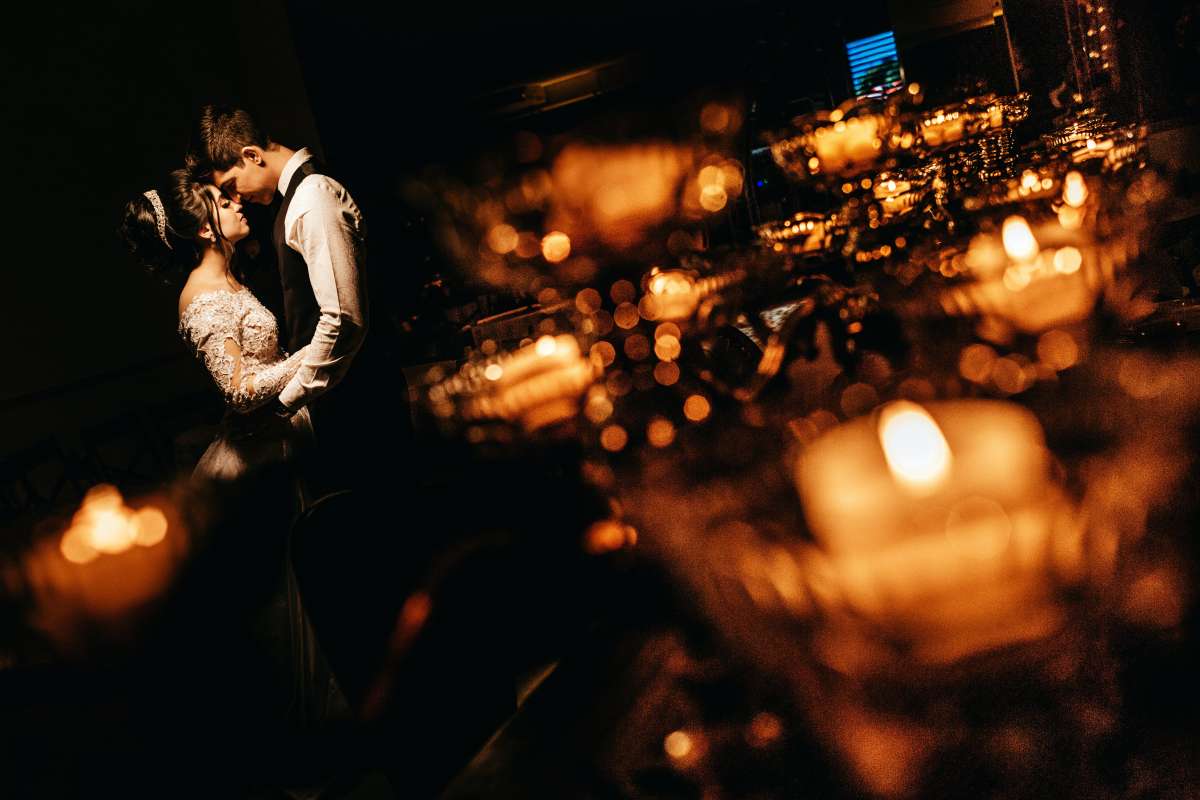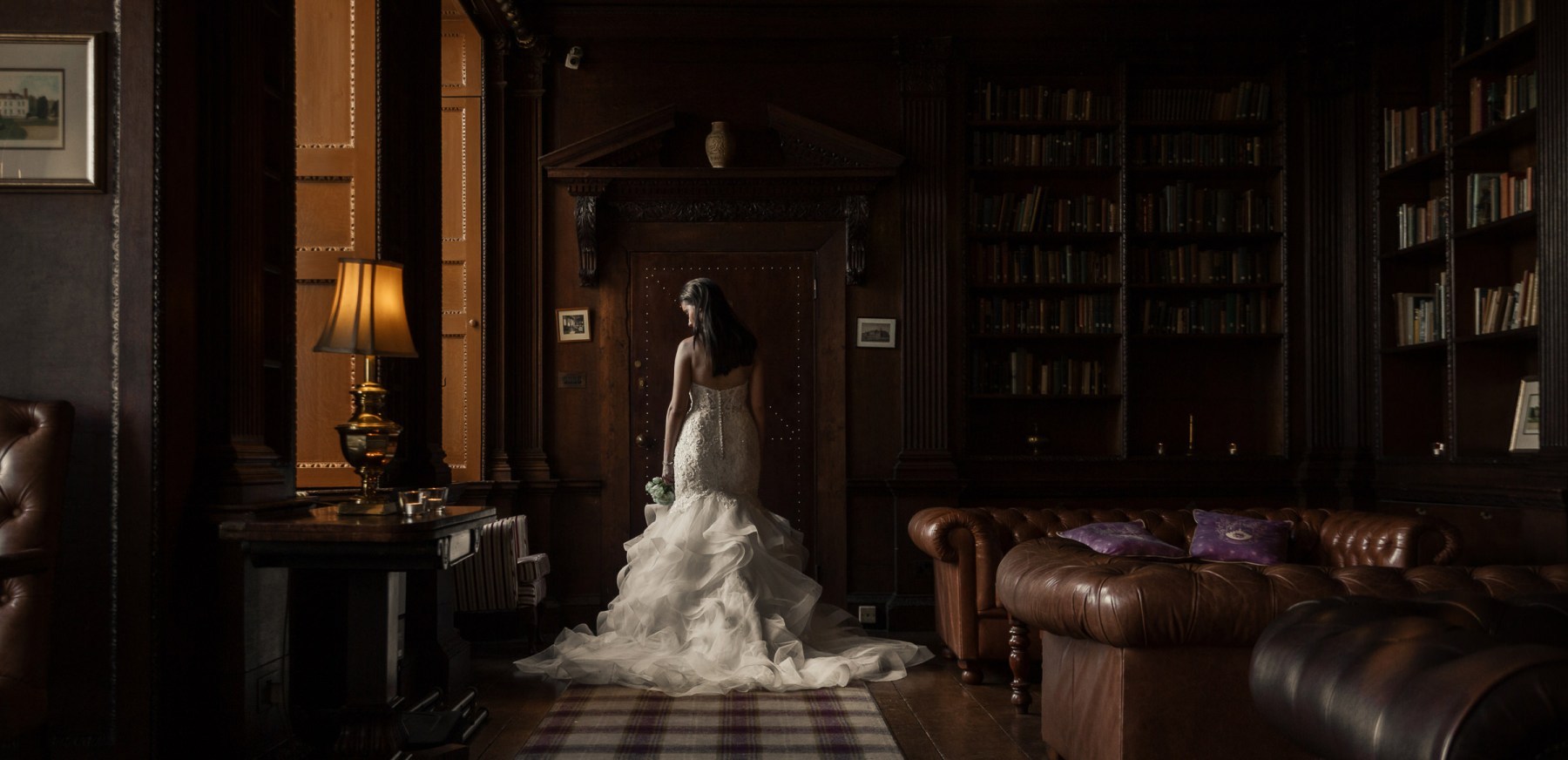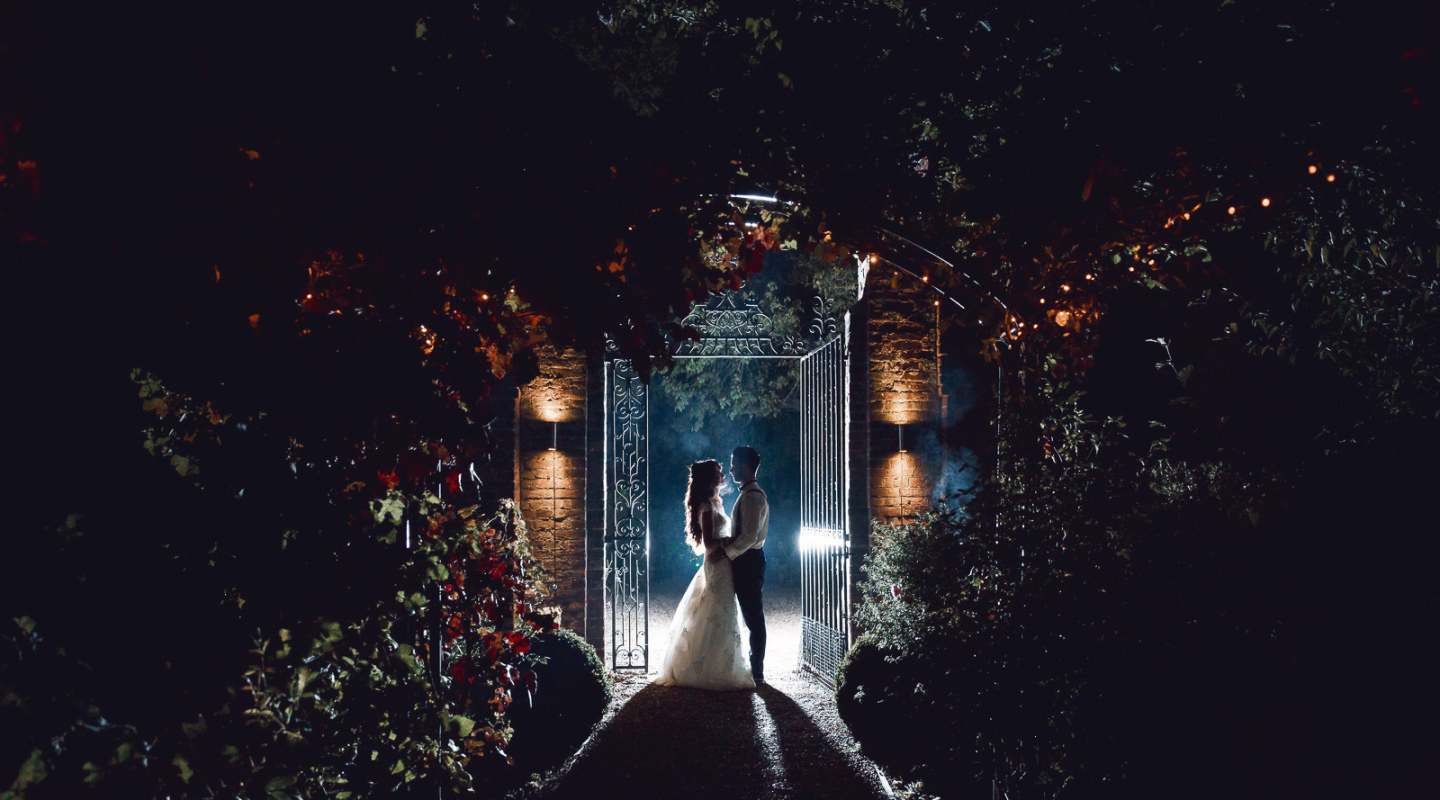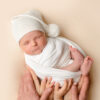Credit: Boutique Weddings
Mastering low light wedding photography techniques isn’t just about having the right gear – it’s about understanding how to use your equipment effectively when natural light fades. After years of shooting evening receptions and dimly lit venues, I’ve developed strategies that consistently deliver stunning results in challenging conditions.
Essential Equipment for Low Light Success
Your foundation for low light wedding photography techniques starts with choosing the right equipment:
Camera Bodies
- Full-frame sensors with good high-ISO performance
- Dual card slots for backup security
- In-body stabilization when available
Prime Lenses
- 35mm f/1.4 for environmental shots
- 50mm f/1.2 or f/1.4 for versatility
- 85mm f/1.4 for portraits and ceremonies
Understanding Your Camera’s Capabilities
Successful low light wedding photography techniques begin with knowing your camera’s limits. Every camera has a “sweet spot” ISO range where image quality remains strong. Spend time testing your equipment to determine:
- Maximum usable ISO for different situations
- Auto-focus performance in low light
- Buffer depth for continuous shooting
- Battery life under heavy processing loads
Camera Settings for Low Light Success
The key to excellent low light wedding photography lies in finding the right balance of settings. Your starting point should typically be:
- ISO: 3200-6400 (venue dependent)
- Aperture: Wide open to f/2.8
- Shutter: No slower than 1/60 for static, 1/125 for movement
- White Balance: Custom set for venue lighting
Fine-tune these settings based on your specific situation and equipment capabilities.
Advanced Lighting Techniques
When natural light isn’t enough, consider these low light wedding photography techniques:
Using Available Light Creatively – Learn to spot and utilize existing light sources:
- Window light during blue hour
- Architectural lighting features
- Decorative elements like string lights
- Video light from videographers
Flash Strategies – Develop a flexible approach to artificial lighting:
- Bounce flash for natural-looking fill
- Direct flash with modifiers for dramatic effects
- Off-camera flash for depth and dimension
Common Challenges and Solutions
 Credit: The Brighton Savoy
Credit: The Brighton Savoy
Dark Reception Venues – Navigate challenging spaces by:
- Finding Light Sources:
- Look for windows and doorways
- Use architectural lighting
- Create your own highlighting opportunities
- Work with venue managers on lighting options
- Technical Adjustments:
- Push ISO when necessary
- Use faster prime lenses
- Employ image stabilization
- Consider multiple exposure techniques
Creative Opportunities in Low Light
Low light situations can lead to unique and beautiful images. Consider these creative approaches:
- Silhouettes against bright backgrounds
- Rim lighting for separation
- Motion blur for dynamic dance shots
- Light painting for unique portraits
Essential Shooting Techniques
Master these fundamental low light wedding photography techniques:
Stabilization
- Proper hand-holding technique
- Strategic use of environmental supports
- Understanding reciprocal rule for shutter speeds
- Burst shooting for critical moments
Focus Strategies
- Using AF assist beams effectively
- Manual focus techniques when needed
- Focus stacking in static situations
- Back-button focus for better control
Post-Processing Considerations
Your low light wedding photography techniques should extend into post-processing:
- RAW file optimization
- Noise reduction strategies
- Color correction for mixed lighting
- Exposure blending when necessary
Gear Maintenance and Preparation
Keep your equipment ready for low light challenges:
- Regular sensor cleaning
- Lens calibration checks
- Battery management
- Memory card organization
Client Communication
Set proper expectations about low light photography:
- Discuss venue lighting during planning
- Share sample images from similar conditions
- Explain technical limitations
- Suggest lighting improvements when appropriate
Practice Exercises
Improve your low light wedding photography techniques through:
- Test shoots in challenging venues
- Practice with moving subjects
- Experimenting with different lighting setups
- Regular equipment testing
Emergency Preparedness
Always have backup plans for equipment failures:
- Spare cameras and lenses
- Multiple lighting options
- Alternative power sources
- Backup storage solutions
Final Thoughts
 Credit: Boutique Weddings
Credit: Boutique Weddings
Success in low light wedding photography comes from a combination of technical knowledge, practical experience, and creative problem-solving. Remember that each challenging situation is an opportunity to create unique and beautiful images. Keep practicing these techniques, and don’t be afraid to push your equipment’s capabilities while maintaining professional quality standards.
Your approach to low light situations should be methodical but flexible. As you gain experience, you’ll develop an intuitive understanding of which techniques work best in different scenarios. The key is to remain confident and focused on capturing meaningful moments, regardless of the lighting challenges you face.









